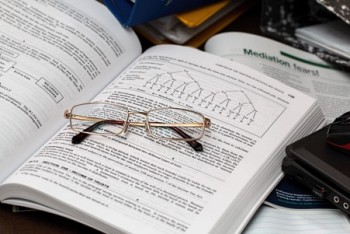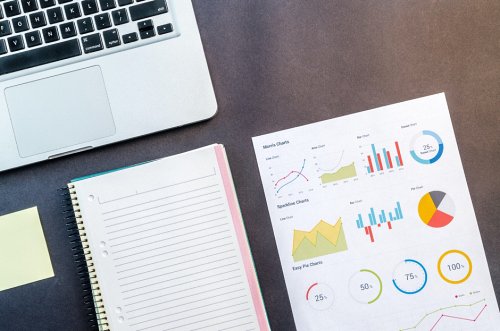Do you have to conduct research but do not know where to start? Does the thought of collecting data scare you? Well, data collection is not at all challenging. If you are sure about your topic, the collection procedure will be a piece of cake.
In this article, you will get 5 data collection methods without much hassle.
- Questionnaire and survey
- Interviews
- Focus Groups
- Direct Observations
- Document Review
That said, you must know that data collection is not difficult, but it requires you to follow a certain approach. Before getting to the nitty-gritty of the five vital methods, you must understand all about data collection. Read on to learn about the various types of data, collection, and more.
What is Data Collection?
Data collection is an extensive procedure of gathering details about a particular topic in a systematized manner. The collected information must be such that it answers the primary questions about the topic of interest. It is done to prove hypotheses and evaluate the results.
One thing that you must always remember about data analysis is its accuracy and integrity. Irrespective of your method and approach, you need to ensure that you collect the data honestly. Only quality data can later lead to credible analysis and answer the questions at hand.
Highly Recommended Articles:
The 4 Different Types of Data Analytics Explained
-

How Bad Data influences Decision-Making
-

The Importance of Data Analysis in Research
-

Is Data Analysis Qualitative or Quantitative? (We Find Out)
When is Data Collection Required?
You may need to collect data for academic research, ongoing projects, or an upcoming product or service. Through data collection, you can analyze the past and current information about a specific topic. You can use this analysis to formulate strategies for the future.
Organizations use data collection to analyze and learn about current trends, employees, customers, competitors, etc. The government may use it to understand and evaluate the need for formulating policies and other significant decisions.
Apart from that, it can be used in varying fields for:
- Eliminating the possibilities of errors
- Improved decision-making for the future
- To implement a new plan, strategy, idea, etc.

Classification of Data
Based on Data Type
Before getting to choosing the optimum collection method, you need to ensure the type of data you need for your research. It can be divided into two categories.
Qualitative Data: It refers to any data that is not numerical, or that is in the form of words, phrases, and sentences are qualitative data. These datasets usually capture the perceptions, intentions, emotions, etc., of individuals on a specific topic.
Some of the commonly used methods to collect qualitative data include in-depth interviews, group discussions, documents, focus groups, etc.
Quantitative Data: These include numerical datasets, which can be analyzed with mathematical techniques. Quantitative data is collected based on scales such as nominal, interval, ratio, and ordinal. Resultantly, this data is usually more accurate, reliable, and credible.
The most common data collection methods for quantitative data are surveys and questionnaires, observations, structured interviews, experiments, etc.
Yet another approach is the mixed-method approach which uses a combination of quantitative and qualitative data.
Based on Collection Process
Based on the collection process, data can be divided into primary and secondary.
Primary Data: It is the first-hand data that you directly collect from individuals. Primary data makes for a fresh data set that has never been published, used, or altered by any other individual.
Therefore, this data is relatively more authentic and accurate. That said, primary data can be time taking, and sometimes inaccurate or forged.
Some common sources or methods of collecting primary data are interviews, surveys, questionnaires, experiments, observations, etc.
Secondary Data: It is the second-hand data that you have taken from an individual, organization, or a published source. Secondary data is not virgin data but holds significance as it includes information of the past.
Moreover, it is most likely to be collected by professionals, and hence, considered accurate.
Some sources of collecting secondary data include documents, books, databases, articles, published censuses, etc.
The 5 Methods of Collecting Data Explained
Now that you know the data types, let us get to the exciting part. Here are the top 5 methods of collecting data.
1. Questionnaire and Surveys
As the name says, a questionnaire is a set of questions that are directed towards a topic. These questions are set with the objective of learning an individual’s perspective and testing hypotheses with the same.
Questionnaire and survey sets are distributed among large populations to gather responses. You can use this method of collecting data for both qualitative and quantitative research.
What are the Requirements for a Questionnaire?
To collect data with this method, you need to:
- formulate a set of questions relevant to the topic.
- position these questions in a systematized manner so that the respondent can understand and answer accurately.
- choose an accessible audience that you can distribute the questionnaire to, physically or digitally.
What type of data do Questionnaires Collect?
You can set a questionnaire to collect subjective or qualitative data or objective or quantitative data, so long as enough data is collected – what is called a statistically significant sample.
Qualitative Data: Questions for this data are usually based on behavior, preferences, perception, emotions, etc. These are mostly open-ended questions where the respondents can formulate their own answers.
Quantitative Data: Questions for this data are aggregated into scales or indexes. For example, poor, less than satisfactory, satisfactory, good, very good. These are close-ended questions where the respondents have to choose from the given options.
How to Create a Questionnaire? Step by Step Procedure
The first step of creating a questionnaire or survey is understanding the topic and target audience. Next, you need to determine the type of data you need, i.e., qualitative or quantitative. Once you have decided on the methodology, you can start formulating questions relevant to the topic and the audience.
Here is a sequence of formulating a systematized questionnaire or survey form.
- Screening questions to determine whether the respondent should complete the questionnaire.
- Easy questions to keep the respondent going.
- Transition questions before getting to the difficult ones.
- Difficult questions that are vital for the research.
Tips
- Make sure to formulate statements that are easy to understand
- Various individuals must be able to interpret the questions in the same manner
- Try to use positive statements
- Make sure your grammar and language are correct
- Ask about only one thing per question
- Do not lead the respondent with your questions or statements
What are Questionnaires Best For?
Questionnaires and surveys work best when collecting data from a large population. This is because it can be costly and time-consuming to reach a wide audience personally.
2. Interviews
It is a method of collecting data by directly asking questions from the respondents. You may conduct an interview face-to-face, on phone calls, or via video calls. An interview may be between an interviewer and a respondent, or multiple interviewers and a respondent. Interviews may be:
What are the Requirements for conducting Interviews?
- A set of questions that you need to cover
- Ways to communicate with the respondent—face-to-face, phone, or video conference
- Find respondents relevant to your research topic who are ready to give the interview.
What are the three Methodologies used for Effective Interviews?
You need to decide about the number of respondents you will be conducting interviews with. Additionally, you will have to choose a method of performing the interview according to your requirements.
Structured: asking pre-set questions in a systematized way. You can use this method when you have detailed knowledge about your topic to create a well-structured questionnaire. Plus, you can give the respondent meaningful options to choose from.
Semi-structured: asking pre-decided questions along with straying away from the topic in the middle. You can use this method if you do not have much knowledge about the subject. Still, you can cover the specific questions along with other general yet relatable ones.
Unstructured: in-depth interviews that cover the topic along with going with the flow of the respondent’s answers. You can use this interview method when you are open to revising your question set.
How to Conduct an Interview? Step by Step Procedure
- Understand your topic and decide on the respondent or sample population.
- Choose the interview methodology based on your current requirement.
- Enlist the questions that you have to ask, according to the chosen method.
- Conduct the interview in a systemized sequence.
- Record or note the responses with diligence.
Tips
- Always maintain a light, conversational tone
- Ask only one question at a time
- Make your questions easy to understand
- Try to encourage the respondent to answer
- Do not divert your attention during the interview
What are Interviews Best For?
An interview is the best data collection method when you are dealing with a relatively small size of respondents. Also, these are recommended when the topics are complicated. For example, healthcare, family welfare, or other similar issues that may be difficult to interpret.
3. Focus Groups
It is a process where a relatively small group of people come together to discuss the topic of interest. Focus groups allow you to collect data in the form of perspectives of a group to get a collective idea.
In this process, the selected individuals conduct a discussion, putting forward their opinions in an informal environment. These participants often belong to the same category of age, gender, social group, etc.
The group also includes a moderator who ensures the discussion is going in the correct direction. Additionally, the trained facilitator also asks questions related to the topic.
What are the Requirements for making Focus Groups?
- Set of questions to be covered for the research
- A small group of individuals belonging to the target audience for answering the questions
- Trained moderator to ask questions and conduct the discussion
- Assistant to record notes during the discussion
What Methodologies are used for Focus Groups?
To conduct focus group discussions, you need to decide about the following essential aspects:
Discussion Standards: You must decide whether you want the participants to cater to specific questions or include other general ideas.
Number of Sessions: You may conduct one or more sessions according to the depth of answers you are looking for.
Number of Groups: You may decide to hold multiple focus groups, each of different categories like age, gender, health status, income status, etc.
Participant Quantity: The average number of focus group participants is 6-10. However, you may choose a smaller or larger group.
Focus Groups for Data Collection Step by Step Procedure
- Identify and determine the target audience to choose the participants.
- Decide the methodology—number of participants, groups, sessions, questions, standards, etc.
- Briefly introduce your research topic and initiate the discussion.
- Ensure that the discussion is going in the right direction by covering all the essential questions.
- Thoroughly record the responses.
Tips
- Make sure the participants answer without any pressure.
- Choose the right number of participants (6-10).
- Try to conduct these sessions with multiple groups to authenticate the results.
- Choose the groups wisely, according to the demographics.
What are Focus Groups Best For?
You can use this method of collecting data if you want observations in a short span. Moreover, focus groups are often used to explore new ideas and fields, add extra opinions, and collect data for difficult topics.
4. Direct Observation
It is a method wherein an observer analyzes the activities and behaviors of individuals in a natural setting. In this process, you do not need to ask any questions or prompt the respondents to act in a certain way.
Requirements
- A setting or situation that you can observe.
- You need to form a system or set of standards to make observations.
- The observations that you make need to be recorded simultaneously.
Direct observation Methodologies
Here are a few methods of observation for you to choose from.
- Casual or Scientific: A casual observation does not require a technical set-up or measurement, whereas a scientific observation requires measurement tools.
- Natural: It is done in a natural environment without altering the behavior of individuals or the setting.
- Objective and Subjective: Objective observation includes observing the setting or individuals, while subjective observation refers to monitoring your own experiences.
- Direct or Indirect: Direct observation lets you analyze the live ongoings of individuals, while indirect observation includes observing pre-recorded actions.
- Participant or Non-participant: Participant observation requires the observer to be a part of the observed. In comparison, the non-participant observation does not require any relationship between the observer and the observed.
Direct Observation for Data Collection Step-by-Step Procedure
- Choose the setting that is fitting for your observation
- Decide the methodology for observing from the options mentioned above.
- Choose a way to observe. For example, answering questions, filling templates, forms, etc.
- Decide the recording manner.
- Conduct the observation.
Tips
- Make sure you do not let the individuals notice that you are observing them
- Choose observers who do not know about the goals and hypotheses as it may bias their observations.
- Train observers well to eliminate discrepancies.
- Make sure the templates or observing sheets are relevant and well-structured
What is Direct Observation Best For?
You can use this approach if you want the responses to be completely free from observer bias. Plus, if you wish to observe the natural behavior of individuals without any pressure or restriction, direct observation is optimum.
5. Documents (Document Review)
In this type of data collection method, you need not deal with any other individual. If you have access to essential existing sources such as documents and records, you can use them to collect data. The data you will get will be secondary data and may be quantitative or qualitative in nature.
Requirements
- Significant records and documents to extract data from.
- Ensuring these documents are accurate.
- Gaining access or permission to these documents.

Methodology
You can choose from one of the three primary types of documents.
- Public Records: These are documents of an organization that are readily available to the public. For example, annual financial reports, company policies, firm mission, company reports, etc. These may be available in company records or on digital platforms.
- Private Documents: These are personal information that an individual keeps hidden from the public. Such documents may include an individual’s experiences, opinions, beliefs, and more. For example, e-mails, journals, personal reports, etc.
- Other Materials: These are other documents that are generally available. These may include flyers and brochures, newspapers, posters, handbooks, etc.
Document Review Step by Step Procedure
- Determine the type of documents you require to collect data for your topic.
- Access the documents that you have decided to analyze.
- Compile the essential documents that will answer your questions and remove the rest.
- Dig about the documents’ background and ensure their accuracy.
- Summarize all the data that you took from the document.
Tips
- Documents may not directly answer your questions. Hold to the little useful information you get.
- Make sure to double-check wherever possible as documents may be incomplete or inaccurate.
- Documents may be biased. Make sure to investigate thoroughly.
What is Document Review Best For?
You can use document review to collect data when you want information about past affairs to conduct research. Additionally, studying document reviews can also help you to formulate questions for questionnaires, interviews, etc.
Summing Up
The data gathering method that you choose can have a considerable impact on your overall research. Even if you have an excellent research design, the wrong process of gathering data can leave your research incomplete.
That said, if you are well informed about your topic, it is relatively easy to choose the correct collection technique.
However, it requires careful determination of the data you need, a rigorous comparison of collecting options, and then choosing. It also includes selecting the correct sample population.
In this article, you got a detailed insight into the top 5 methods of collecting data. These include methods for both qualitative and quantitative along with primary and secondary data. So, go ahead and choose the optimum approach to conduct your research flawlessly and successfully!
References & Further Reading
https://www.simplilearn.com/what-is-data-collection-article
https://online.hbs.edu/blog/post/data-collection-methods
https://www.jotform.com/data-collection-methods/
https://managementhelp.org/businessresearch/interviews.htm
https://www.researchgate.net/publication/325846997_METHODS_OF_DATA_COLLECTION
https://www.formpl.us/blog/data-collection-method
https://www.cdc.gov/healthyyouth/evaluation/pdf/brief18.pdf

